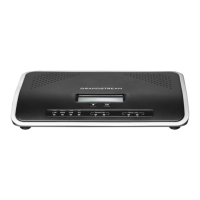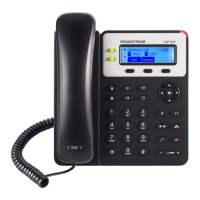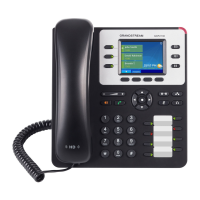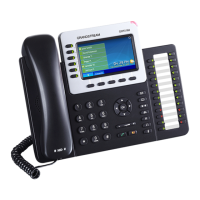CALL ROUTES
Outbound Routes
Outbound Routes
In the UCM6200, an outgoing calling rule pairs an extension pattern with a trunk used to dial the pattern. This
allows different patterns to be dialed through different trunks (e.g., "Local" 7-digit dials through a FXO while
"Long distance" 10-digit dials through a low-cost SIP trunk). Users can also set up a failover trunk to be used
when the primary trunk fails.
Go to Web GUI->PBX->Basic/Call Routes->Outbound Routes to add and edit outbound rules.
• Click on "Create New Outbound Rule" to add a new outbound route.
• Click on to edit the outbound route.
• Click on to delete the outbound route.
• On the UCM6200, the outbound route priority is based on “Best matching pattern”. For example, the
UCM6200 has outbound route A with pattern 1xxx and outbound route B with pattern 10xx configured. When
dialing 1000 for outbound call, outbound route B will always be used first. This is because pattern 10xx is a
better match than pattern 1xxx. Only when there are multiple outbound routes with the same pattern
configured, users can click on to move the outbound route up/down to arrange the priority
among those outbound routes.
Note: Under Web GUI->PBX->Basic/Call Routes->Outbound Routes -> Country codes section, the UCM
display a list of countries international codes and the administrator can exclude specific countries to be reached.
Table 60: Outbound Route Configuration Parameters
Configure the name of the calling rule (e.g., local, long_distance, and etc). Letters,
digits, _ and - are allowed.
• All patterns are prefixed with the "_".
• Special characters:
X: Any Digit from 0-9.
Z: Any Digit from 1-9.
N: Any Digit from 2-9.
".": Wildcard. Match one or more characters.
"!": Wildcard. Match zero or more characters immediately.
Example: [12345-9] - Any digit from 1 to 9.
After creating the outbound route, users can choose to enable and disable it. If the
route is disabled, it will not take effect anymore. However, the route settings will
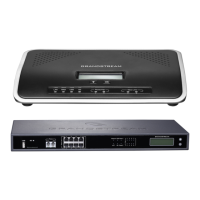
